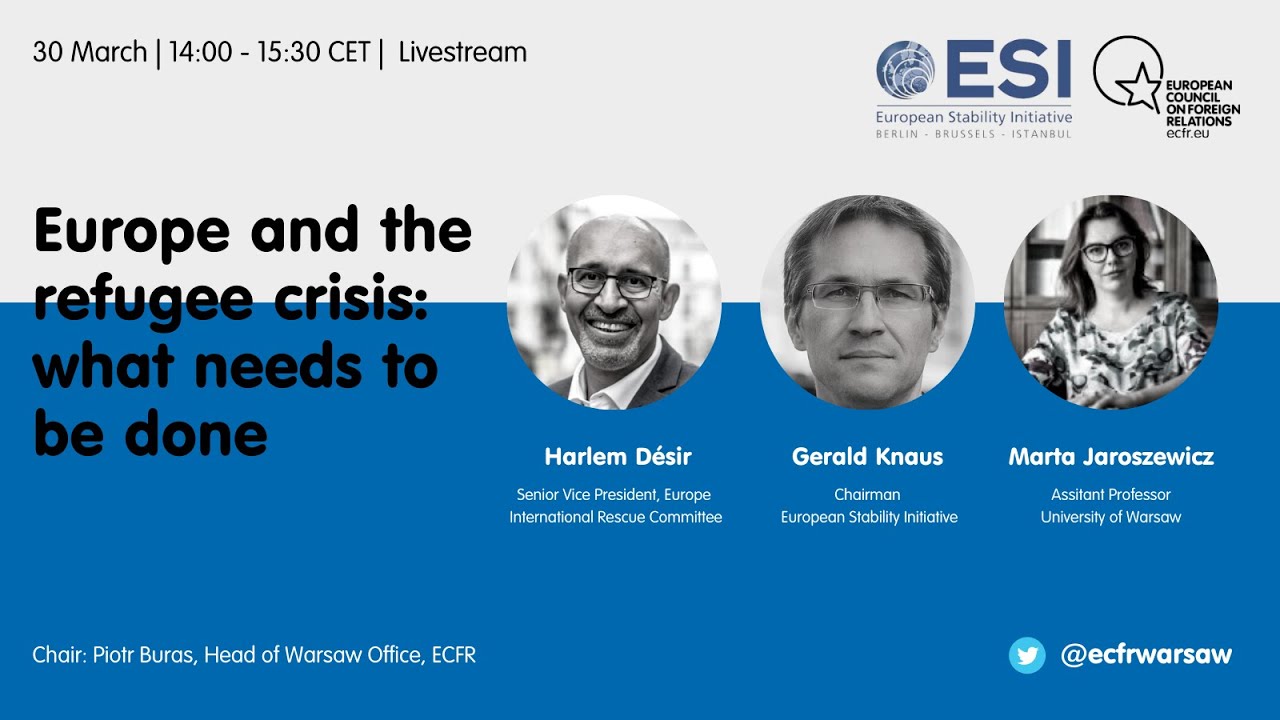Europe and the refugee crisis: what needs to be done
What instruments does the EU have at its disposal to address the challenges related to the crisis? And what are the lessons learned from the refugee crisis in 2015?
Guests
- Harlem Désir, Senior Vice President, Europe, The International Rescue Committee
- Gerald Knaus, Chairman, European Stability Initiative
- Marta Jaroszewicz, Assistant Professor, Centre of Migration of Warsaw University
Chaired by
- Piotr Buras, Head of Warsaw Office, European Council on Foreign Relations
More than 2,2 million refugees from Ukraine have crossed the Polish border. Several thousands of them have already left Poland to seek refuge in the countries of Western Europe. However, the majority is still there. The numbers are still growing even if the dynamic of the inflow has slowed down in recent days. 20.000-30.000 new refugees per day would increase the overall number by 600.000-1 Million within just one month. And with no end to the war in sight, more refugees can be expected.
This is a humanitarian crisis of unknown proportions in Poland but also in the European Union. Attacking the civilian population and provoking a humanitarian disaster is a key element of Putin’s war strategy which is directed not only against Ukrainians but also against EU countries. It is thus a responsibility of all Europeans to provide help for refugees, support for frontline countries like Poland, Moldova, or the Czech Republic, and prevent Russia from achieving its goals.
The Temporary Protection Directive enacted by the EU gives refugees access to protection and to the labour market across the bloc. This has been a major step. The EU has also provided additional funds for countries that have to shoulder the burden of the inflow of refugees.
What other instruments does the EU have at its disposal to address the challenges related to the crisis? How should the EU’s financial resources be best distributed? What are the lessons learned from the refugee crisis in 2015? Do we need a relocation system in the EU? Why has Poland so far not requested such assistance from its EU partners? Would an airlift resembling the efforts undertaken during the Berlin blockade in 1948, as suggested by the think-tank European Stability Initiative (ESI), be a possible option? ESI has argued that this would not only be about helping people but also bolster the authority and credibility of the West as a community of values. It would be a humane response to inhumane cynicism.

